- europages
- >
- COMPANIES - SUPPLIERS - SERVICE PROVIDERS
- >
- pharmaceutical packaging
Results for
Pharmaceutical packaging - Import export
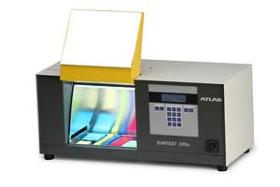
ATLAS MATERIAL TESTING TECHNOLOGY GMBH
Germany
The Atlas SUNTEST CPS+ is the small entry model. CPS+ is the most widely used benchtop xenon instrument in the world. Its compact design, easy handling and proven reliability make it the ideal quality control and R&D screening device for a variety of industries, such as plastics, packaging, pharmaceuticals, cosmetics, and many more. 1x 1500 W air-cooled Xenon Lamps 560 cm 2 exposure area Measurement and control of Irradiance in the wavelength range 300-800 nm / Lux; or 300-400 nm / 340 nm Measurement and control of Black Standard Temperature (BST) Display of Chamber Temperature Display of Test Values and Diagnostic Messages Parameter Check Two pre-programmed test methods Storage for 6 user-defined test methods Multilingual User Interface Benchtop design 90 x 35 x 35 cm Static, horizontal exposure area for flat or 3D specimen Fan-controlled BST from 45-100 °C (without chiller unit SunCool) Non-aging reflector and filter system, consistent of selectively reflecting mirrors and a coated quartz Switch-off choices Radiant Exposure or Test Time Base Filter as carrier for additional optical filters Data output via serial interface RS232 Internally integrated Memory Card for Software Updates Light Monitor 300-400nm Light Monitor 300-800nm Humidity Sensor for measuring relative humidity during testing

B+B AUTOMATIONS- UND STEUERUNGSTECHNIK GMBH
Germany
The products are manually placed on the conveyor belt, printed from above and collected at the end of the system. The portable system is equipped with a Wolke m610 Touch thermal inkjet system. An upgrade to a manual serialisation system with b+b Linemanager and Full Vision System is optionally available. The conveyor belt is driven by a powerful stepper motor with constant speed. The conveyor belts are provided with crossbars at regular intervals to achieve constant product guidance and thus a consistent print result. The distance between the two toothed belt conveyors can be easily adjusted in order to process different product widths. For processing slightly slanted products, the positions of the crossbars can also be adjusted to each other.
Request for a quote
B+B AUTOMATIONS- UND STEUERUNGSTECHNIK GMBH
Germany
This workstation enables the manual serialisation of drug packages and their aggregation into shipping cases. For this purpose, each individual box is first printed with order-related serialisation data by a thermal inkjet printing system as it passes by and then manually placed in a shipping carton. As soon as it is filled, the downstream thermal transfer label printer creates an individual serialisation label. The correct print data and print quality are permanently monitored by a vision system. The operator places the medicine products to be serialized on a reference edge at the infeed. As soon as the thermal inkjet printer has printed the serialisation data, the integrated vision system checks that the data is correct. If an error is detected (e.g. insufficient grading), the product stops at a certain position marked by red LEDs. The removal of the rejected product must be confirmed by pressing a button on the HMI.
Request for a quote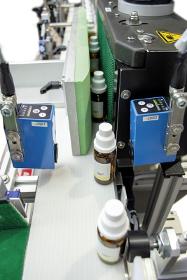
B+B AUTOMATIONS- UND STEUERUNGSTECHNIK GMBH
Germany
To serialize vials and other cylindrical products, we rely on the proven quality and reliability of our labelers. In order to achieve the best possible grading of the serialisation barcodes, we integrate thermal transfer printer or marking laser units directly on the label applicator. The vision system immediately inspects the print data after the printing process. If the inspection shows a negative result, we optionally offer a label reject station which automatically removes the label from the process and therefore does not waste a „good product“. Both the vision system and the print engine are fully integrated in the touch panel HMI. Shift registers in the label applicator as well as in the complete system enable product and label tracking through the complete system.
Request for a quote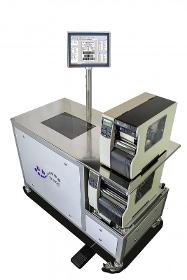
B+B AUTOMATIONS- UND STEUERUNGSTECHNIK GMBH
Germany
The STS-B was developed for the simple aggregation of pharmaceutical packs into a bundle. For this purpose, the barcodes of serialized products are captured from below by the vision system through a scratch-resistant glass plate. The distance between camera and barcode therefore always remains the same. The maximum working surface is 420 mm (W) x 300 mm (D). The detected serial numbers are marked in green so that they are easy for the operators to understand. Depending on the configuration, the system can compare the recorded serial numbers with the default values of the L3 installation. Particular attention was paid to user guidance (workflow) in order to achieve maximum process reliability. In order to completely fill the carton layer(s) or spaces, barcodes that cannot be placed with the barcode facing upwards due to their orientation can be manually added in each layer by the integrated handheld scanner to complete the respective layer or carton.
Request for a quoteDo you sell or make similar products?
Sign up to europages and have your products listed

B+B AUTOMATIONS- UND STEUERUNGSTECHNIK GMBH
Germany
s with the MS-PV-AG model, the products are fed manually by the operator. Product carriers and adjustable guide rails ensure a stable product transport. As soon as the thermal inkjet printer has printed the serialisation data, the integrated vision system checks that the data is correct. If an error is detected (e.g. insufficient grading), the product is removed from the process and fed to a lockable collection box. It is not taken into account during the formation of the aggregation pedigree and is ejected and marked in the shift register as soon as the error is detected. As soon as the filling quantity per carton is reached according to the specified packing scheme, the system automatically generates a serialized label for the shipping carton. It is applied manually by the operator and confirmed by a handheld scanner that the aggregation label has been applied.
Request for a quote
B+B AUTOMATIONS- UND STEUERUNGSTECHNIK GMBH
Germany
The MAT model series serves as a mobile terminal for all aspects of aggregation and rework. Aggregation and rework can take place over several levels. The devices are available in the following expansion stages: MAT-C Manual aggregation and rework station (1 level) (boxes – shipping cases) MAT-P Manual aggregation and rework station (1 level) (shipping cases – pallets) MAT-CP Manual aggregation and rework station (2 level) (boxes – shipping cases – pallets)
Request for a quote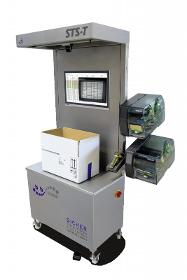
B+B AUTOMATIONS- UND STEUERUNGSTECHNIK GMBH
Germany
The STS-T series is based on high-resolution image chips and is available with resolutions of 12, 20 or 30 megapixels. With the real-time autofocus, any number of barcodes, even if they vary greatly in height, can be easily and reliably captured without mechanical or manual adjustment. For this reason, the system also finds its place in the incoming goods department of large pharmacies or re-importers (in entrance module mode). The field of view of 600 mm in width and 400 mm in depth is marked on the base frame. The shipping cases can have a height of up to 380 mm.
Request for a quote
B+B AUTOMATIONS- UND STEUERUNGSTECHNIK GMBH
Germany
This powerful HSF friction feeder is the optimal solution when empty folding boxes have to be marked with variable data offline from the production line. The modular design of the system enables an easy integration of the desired marking technology. The HSF separates the folding boxes from the stack in the infeed magazine. The cartons are guided to the printing station by two parallel running belt conveyors. Print information could be e.g. serialisation data in the form of bar codes or data matrix codes and text. Depending on requirements, thermal inkjet, laser coders or label print- and apply systems can be used (also in combination). The printed data is inspected and verified by an integrated vision system. The b+b Linemanager recognized all 21CFR Part 11 data for each serial number and is able to report this back to the Siteserver system (e.g. b+b Siteserver).
Request for a quote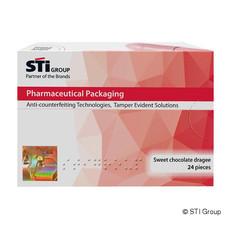
STI GROUP / STI - GUSTAV STABERNACK GMBH
Germany
Over ten percent of medicines worldwide are counterfeit, according to a study by the US Food and Drug Administration (FDA). As a specialist in pharmaceutical packaging, the STI Group embraced the challenge to design a pharmaceutical packaging that patients, pharmacists and hospitals can rely on and that ensures that the product in their hands is an original product. The pharmaceutical packaging protects people against counterfeit medicines and the pharmaceutical industry against high financial losses.
Request for a quote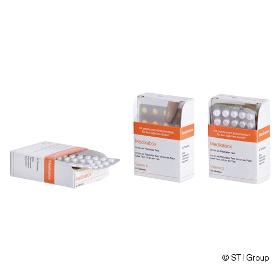
STI GROUP / STI - GUSTAV STABERNACK GMBH
Germany
The packaging design of the medicine box makes it easy for the elderly to take their daily medicine. The packaging solution for pharmaceutical products has a separate compartment for removal of the tablet in the front in which the broken blister is put. A curved inner flap in this compartment ensures that the blister is slightly wedged in. This inner flap also has anti-slip varnish.
Request for a quoteResults for
Pharmaceutical packaging - Import exportNumber of results
12 ProductsCountries
Company type